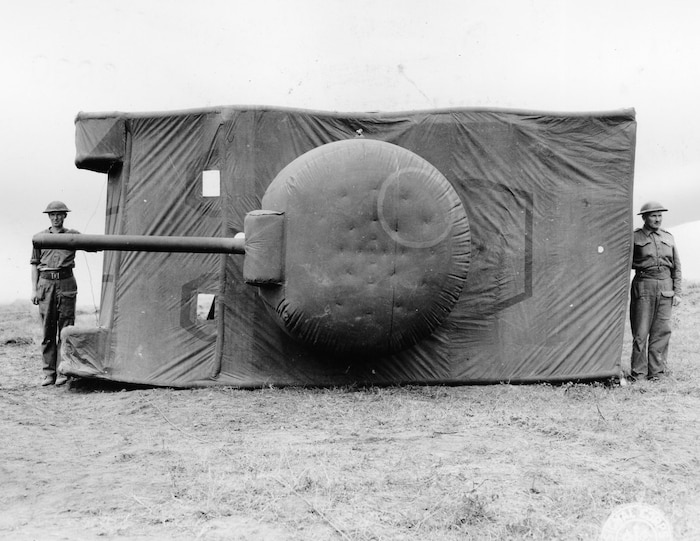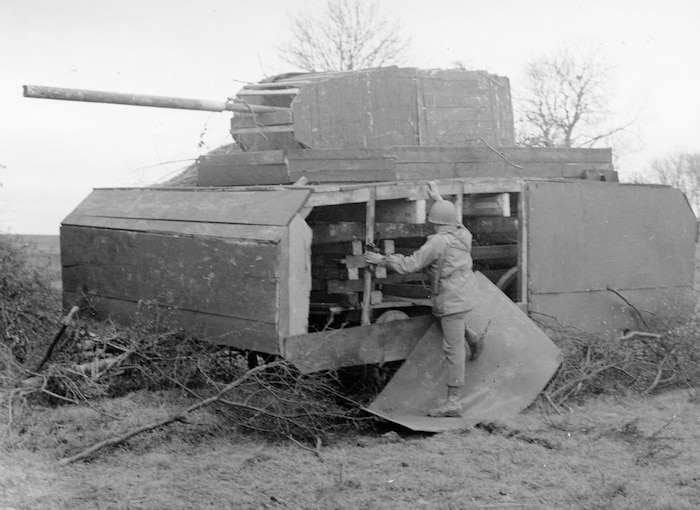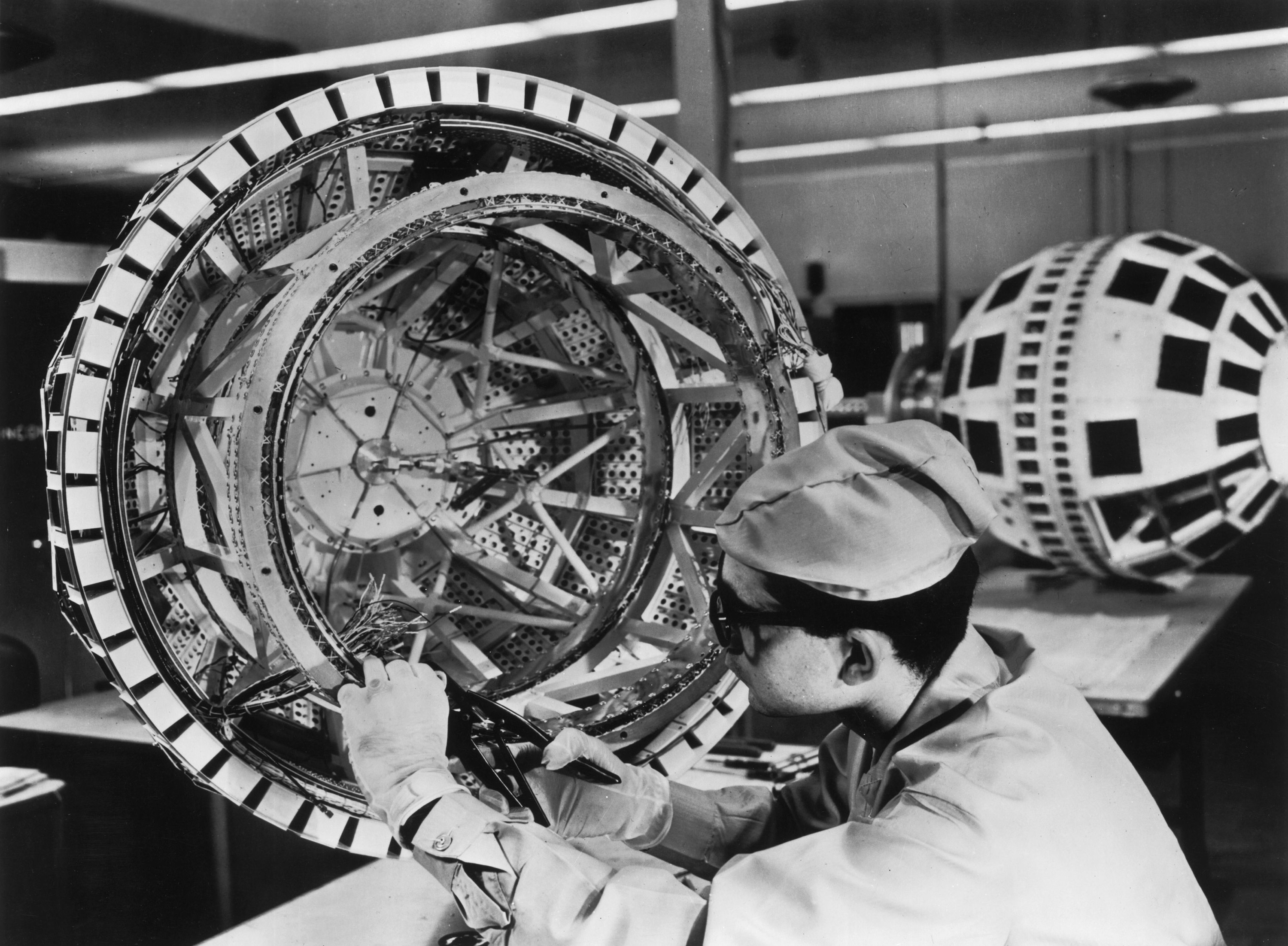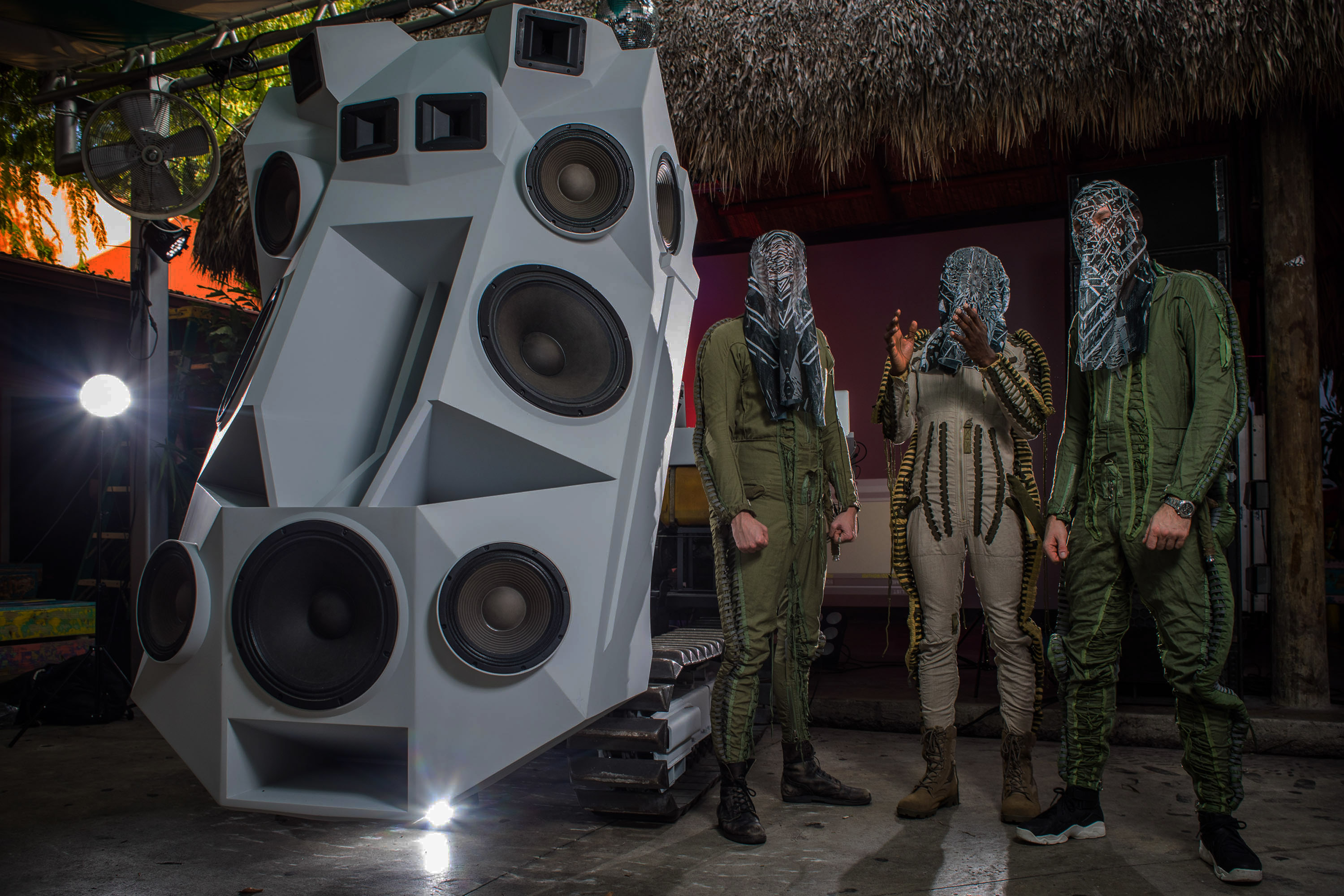How Fake Sound Recordings Helped Win World War II
The creation of sound, from the beginning of time to our technological present, has been a tale of deception and deceit. To create sound out of nothing, to make the ineffable ever-present and always at least suggestively "there," is a ruse, a scam, a scheme.
Supporting them, equipment-wise, were phony artillery guns and inflatable tanks that could be moved and flipped upside-down by hand.
Few case studies make this clearer than an American military operation active in World War II with an arsenal of phantasmagorical sounds recorded on vinyl records, glass disks and spools of metal wire. They were manufactured, mixed together and broadcast onto the battlefield by roving speakers that weighed, more than a little monumentally, a hulking 500 pounds. Supporting them, equipment-wise, were phony artillery guns and inflatable tanks that could be moved and flipped upside-down by hand.
It was called the Ghost Army, a regimen of the U.S. military whose procedures during World War II have only just recently, over the past few years, come to light. Steve Goodman, AKA Hyperdub mastermind Kode9, included a brief chapter on the unit in his 2012 book Sonic Warfare: Sound, Affect, and the Ecology of Fear, but a recent documentary produced for public television in the United States gives a fuller picture of their operation. The focus of the film is a tale of subterfuge, undertaken by the U.S. military in an effort to entertain any means necessary to stop, slow or at least somehow discombobulate the enemy on its march.
Classified until decades after the fact, the simple existence of the Ghost Army was unknown to most. Even now, little about it classes as "simple" in any sense of the term. "We were looked upon as slightly freakish, and we probably were," says one of several former Ghost Army members featured in the film. The members of the group were mostly artists – painters, sculptors, sorcerers of sound – and their methods included all sorts of creative solutions to make the enemy think they were bigger, badder and more ominous than they actually were.
Visual artists in the regimen got the earliest action, among them the minimalist painter Ellsworth Kelly, fashion designer Bill Blass and the photographer Art Kane (the eye behind A Great Day in Harlem, an iconic 1958 photograph of dozens of jazz musicians arranged around a stoop in New York). In their action plan was an elaborate program of schemes to present the illusion of a formidable army on the move. They designed fake tanks filled with air, add-on shells for vehicles that seemed to transform into monstrous machines, models of artillery units that only just barely appeared to be real. From a distance, and especially by radar, all of these suggested the presence of an imposing army. In reality, it was little more than a strategic game of make-believe, a magician’s trick.
Alongside the visual part of the project ran a program related to sound, equipped with the most progressive resources for both recording and broadcasting in those early years of the mechanical age. Led by an American huckster extraordinaire named Hilton Howell Railey – the PR man behind the spectacle of Amelia Earhart’s first solo trans-Atlantic flight in 1932 – the sonic unit of the Ghost Army went to work with collaborators from Bell Labs, with a focus on recording sounds and making those recordings mobile enough to take out into the field. They cut the sounds of fake and foreboding stuff happening onto 16-inch transcription disks.
The recordings on disks – of lumbering tanks, of the clanking construction of bridges, of swearing by ostensible sergeants in charge – were played together on multiple turntables and mixed down, in early multi-track style, to metal wire, which preceded the use of magnetic tape. (Unlike records, wire would not skip). The specs: two miles of magnetized wire on a single spool, long enough for 30 minutes of sound.
The speakers developed to play back the sounds in the field weighed a quarter of a ton each and could be heard, the film says, within a range of 15 miles. “The biggest boom-box you ever saw” is how one former Ghost Army member describes it. From such equipment sounds were sent into the ether, for an enemy to hear and confuse for a sign of something only metaphysically there.
“The biggest boom-box you ever saw” is how one former Ghost Army member describes it.
“The ear is deceived more readily than the eye,” sound-studies luminary Christoph Cox writes in a history of the Ghost Army in Cabinet magazine. “Passive and reactive, its most primitive function is to alert the creature to impending danger… Whether or not we want to, we hear from all directions at once. Hence, without visual evidence of the source, the ear easily mistakes the copy for the original, Memorex for the live event.”
The eeriness of the unseen, more eerie for the ways it conscripts the imagination, figured into the Ghost Army’s ethereal strategy. Cox writes of “electronics geek” Walter Manser, whose charge in the Ghost Army was to build up a library of sounds: “He directed tanks and cars to start, stop, idle, approach, retreat, drive over bridges and up and down hills, while he recorded the sounds onto glass disks in a portable studio set up in the back of a van.”
He also worked on more menacing earworms fit to wiggle into the minds of enemies who might hear. Cox writes, “Learning that the Japanese peasant infantry superstitiously associated the sound of barking dogs with impending death, Manser had his men round up and record packs of noisy canines, whose barking and yapping he embedded in ambient sounds recorded in the Panamanian rainforest.”
Sounds of the sort actually came to pass in battle, as the Ghost Army played a significant role in major events on the European front. After D-Day, the visual operators of the Ghost Army landed near the beach at Normandy, and the sonic unit joined them shortly thereafter in France. Near Metz, they broadcasted sounds for four nights running; an enlistee in the film remembers recordings of “sergeants’ voices saying, ‘Put out that damn cigarette now!’” The Germans were fooled enough to be mistaken as to where exactly they would be attacked, and the U.S. won.
Did a group of proto-DJs and rogue sound geeks help guide the tide of history? Did their machines in fact kill fascists? Sometimes the truths of history, in all their figures and facts, make for equations that simple stories could never tell.
Header image © National Archives



